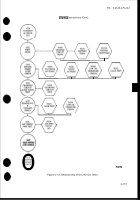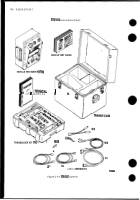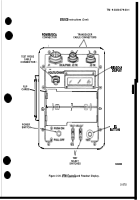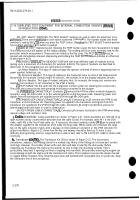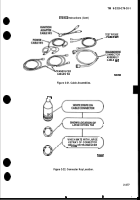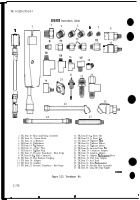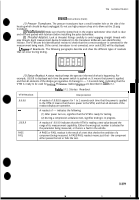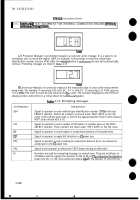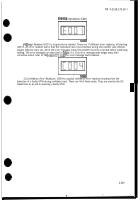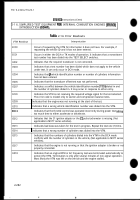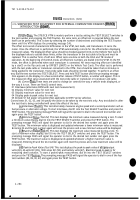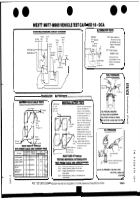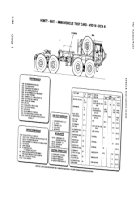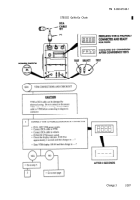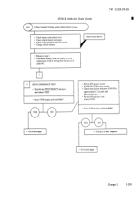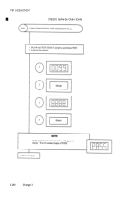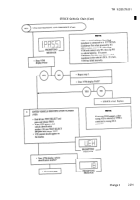TM-9-2320-279-20-1 - Page 363 of 985
TM 9-2320-279-20-1
STE/lCE Instructions (Cent)
j. operating Modes.
The two basic modes in which the STE/ICE system is operated are the
Diagnostic Connector Assembly (DCA) mode, and the Transducer Kit (TK) mode. The DCA and TK can also
be operated together in a combined mode.
(1)
DCA Mode.
In the DCA mode, the VTM is connected to a diagnostic connector assembly installed
in the vehicle. The diagnostic connector, which is located in the cab, terminates a wiring harness routed
throughout the vehicle. The wires in the harness connect to test points on the vehicle and also to the
vehicle’s battery system. The connector and harness are a permanent part of the vehicle.
(2)
TKMode.
In the TK mode, the VTM is connected to the vehicle using adapters, transducers, and
cable assemblies contained in the Transducer Kit. The transducers are installed in place to make the tests
and are removed when testing is completed. One or more cables are required to connect the required
points and supply power to the VTM.
(3)
Combined Mode.
The DCA and the TK can be used at the same time. This maybe necessary when
the diagnostic connector assembly has a missing transducer. If a transducer is missing, a no sensor
indication (EO02) is displayed when a measurement is made. If this happens, the TK mode can be used to
make the measurement.
k.
Vehic/e Testing.
The STE/ICE system was developed as a tool for the mechanic to use in testing
both electrical and mechanical components on vehicles.
(1) Data J%WU ?%$.s. At the beginning of testing it is necessary for the operator to enter vehicle
information into the VTM. The Vehicle lkst Card will tell what data is required. The reason for entering
data is that certain tests require vehicle or cylinder information to be done properly. Tksts 13, 14, and 15
require VID information. If the VID is entered, the number of cylinders is automatically entered.
(a)
Cylinder Entry (?bst 58).
In this test, the number of cylinders or number of cylinder parts is
entered. If the operator does not know what number to enter, it can be found on the VTC or the flip card
on the VTM. The VTM’s response to test 58 is display CYL. This is the signal to dial the number of cylinders
into the TEST SELECT switches and press the TEST button. The VTM will not try to perform a test, it just
remembers the number of cylinders. If there is a problem with the number that was entered, one of the
following error messages will be displayed: EO07, EO1O, E014, or E015. These messages are described in
lhble 2-13.
(b)
Vehicle ID Entry @est 60).
In this test the Vehicle identification number is entered. This number
is given on the VTC and, for the M977 series vehicles, is number 18. The VTM’s response to test 60 is to
display UEE. This is the signal to dial the VID number (18) into the TEST SELECT switches and press the
TEST button. The VTM will not try to perform a test, it just remembers the VID. If there is a problem with
the number entered, error message EO07 or EO1O will be displayed. These messages are described in
lhble 2-14.
(2)
Data Display l%% (lksts 59, 61-64).
These tests are used to read out data previously stored in the
VTM. ‘l&t 59 displays currently stored cylinder information when the TEST button is pressed. lkst 61
displays the currently stored Vehicle ID number when the TEST button is pressed. lkst 62 displays the
currently attached DCA ID number when the TEST button is pressed (06 for M977 series vehicles). ‘lkst 63
displays the ID of the currently attached transducer on connector J2. Wst 64 displays the ID of the
currently attached transducer on connector J3. Refer to ~ble 2-15 for transducer ID numbers.
Table 2-15. Transducer ID Numbers
Transducer attached to J2 or J3
ID number displayed by test 63 or 64
Pressure transducer -15 to +25 PSIG (red stripe)
4
Pressure transducer 0-1000 PSIG (blue stripe)
I
7
Pulse tachometer
I
10
Current Probe
I
13
2-283
Back to Top

